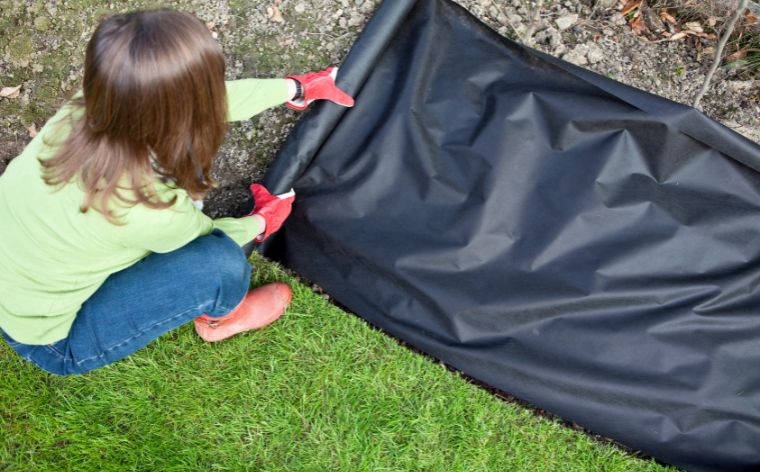Understanding the materials and technologies used in construction and landscaping is crucial for anyone involved in these fields. One such material is geotextile fabric, which plays a vital role in a variety of applications. In this post, we’ll explore what geotextile fabric is, how it works, and its many benefits.
What is Geotextile Fabric?
Geotextile fabric is a type of material used in construction and landscaping to enhance the performance and longevity of soil and structures. It is typically made from synthetic fibers and comes in several forms:
- Woven Geotextile Fabric: Made by interlacing fibers, offering high strength and durability.
- Non-Woven Geotextile Fabric: Created by bonding fibers together through heat, chemicals, or mechanical processes. It provides excellent filtration and drainage properties.
- Knitted Geotextile Fabric: Produced by knitting fibers together, this type is less common but used in specific applications.
Each type of geotextile fabric serves different functions and is chosen based on the requirements of the project.
Key Functions of Geotextile Fabric
Geotextile fabrics are designed to perform several essential functions:
- Separation: One of the primary functions is to prevent different soil layers from mixing. This is crucial in construction projects where distinct soil layers are needed to maintain stability and prevent contamination.
- Reinforcement: Geotextile fabrics add strength to soil and structures, making them more stable and capable of bearing additional loads. This is especially important in road construction and embankments.
- Filtration: They allow water to pass through while retaining soil particles, preventing soil erosion and clogging. This filtration helps maintain the integrity of soil and structures.
- Drainage: Geotextile fabrics facilitate effective water drainage, which is essential in managing water flow and preventing water damage to structures.
How Does Geotextile Fabric Work?
Geotextile fabric works through several mechanisms:
- Separation: When used in road construction, for example, geotextile fabric is placed between the subgrade soil and the road base. This prevents the mixing of these layers, which helps maintain the structural integrity of the road.
- Reinforcement: In embankments or retaining walls, the fabric distributes loads and reinforces the soil, enhancing stability and reducing the risk of collapse.
- Filtration: In drainage systems, geotextile fabric filters water, allowing it to flow through while trapping soil particles. This prevents clogging of drainage systems and helps maintain proper water flow.
- Drainage: By providing pathways for water to flow, geotextile fabric helps manage excess water and prevent issues like waterlogging and erosion.
Real-World Examples:
- Road Construction: Geotextile fabric is used to prevent subgrade soil from mixing with the road base, ensuring a stable foundation.
- Erosion Control: It stabilizes slopes and riverbanks by preventing soil erosion and promoting vegetation growth.
- Landscaping: In gardens, it improves soil structure and drainage, enhancing plant health and growth.
Applications of Geotextile Fabric
Geotextile fabric is used in various applications, including:
- Civil Engineering: Roads, embankments, and retaining walls rely on geotextile fabric to improve stability and longevity.
- Environmental Protection: It plays a key role in erosion control, landfills, and wetlands by preventing soil loss and managing water flow.
- Construction: Geotextile fabric is used in foundations, drainage systems, and landscaping to enhance performance and durability.
Benefits of Using Geotextile Fabric
Geotextile fabric offers several advantages:
- Durability: It is resistant to environmental conditions such as moisture and UV rays, ensuring long-lasting performance.
- Cost-Effectiveness: By reducing the need for additional materials and maintenance, geotextile fabric can lower overall project costs.
- Environmental Impact: It supports sustainable construction practices and helps manage natural resources more effectively.
Common Misconceptions and Clarifications
There are a few misconceptions about geotextile fabric:
- Myth: Geotextile fabric is not effective in all conditions.
- Clarification: When chosen and installed correctly, it is highly effective in various applications, including erosion control and soil stabilization.
- Myth: It’s only useful for large-scale projects.
- Clarification: Geotextile fabric is also beneficial in smaller projects, such as garden landscaping, where it improves soil quality and drainage.
Choosing the Right Geotextile Fabric
When selecting geotextile fabric for a project, consider factors such as:
- Project Type: Different projects require different types of geotextile fabric. For instance, woven fabrics are ideal for reinforcement, while non-woven fabrics are better for filtration.
- Soil Conditions: The type of soil and its drainage properties will influence the choice of fabric.
- Environmental Factors: Consider the environmental conditions the fabric will be exposed to, such as moisture and temperature.
Consulting with experts can help ensure you choose the right geotextile fabric for your specific needs.
Conclusion
Geotextile fabric is a versatile and valuable material in construction and landscaping. Understanding its functions and applications can help you make informed decisions for your projects. Whether you’re involved in large-scale civil engineering or small garden improvements, geotextile fabric offers numerous benefits that enhance performance and durability.


